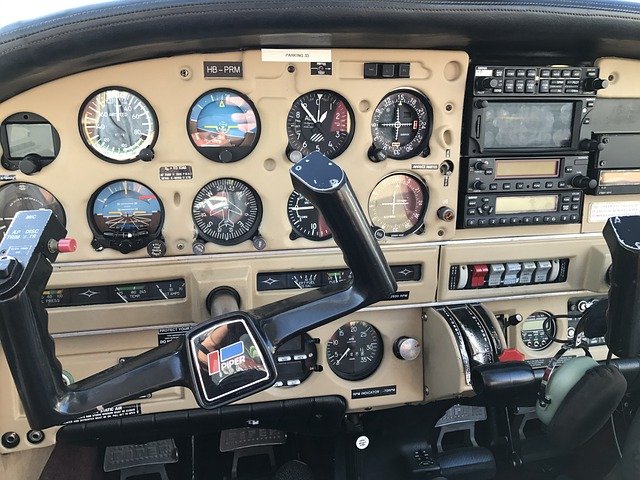Top Tips for Choosing the Best Flight School
Finding the right flight school is the key to starting a successful aviation career. Certified programs with experienced instructors provide both ground training and hands-on flying, helping you gain confidence fast. With transparent pricing, strong student reviews, and FAA-approved courses, you can train safely and effectively—start exploring your flight school options today.

What Makes Flight Schools Stand Out From Others?
The best flight schools share several common characteristics that set them apart from mediocre training facilities. Accreditation stands as the primary indicator of quality, with reputable institutions holding certifications from aviation authorities like the FAA in the United States or EASA in Europe. These certified aviation schools must meet stringent safety standards, maintain qualified instructors, and provide structured curricula that prepare students for professional aviation careers.
Modern aircraft fleets represent another distinguishing factor. Top-tier schools invest in well-maintained aircraft with updated avionics, ensuring students learn on equipment similar to what they’ll encounter in their professional careers. Additionally, the instructor-to-student ratio significantly impacts learning quality, with better schools maintaining smaller class sizes for personalized attention.
How Do Best Pilot Training Programs Structure Their Curriculum?
Outstanding pilot training programs follow comprehensive, structured approaches that balance ground school education with practical flight experience. These programs typically begin with fundamental aerodynamics, weather systems, and federal aviation regulations before progressing to complex aircraft systems and emergency procedures.
The most effective training programs integrate modern technology, including flight simulators and computer-based training modules, alongside traditional cockpit instruction. They also provide clear pathways from private pilot licenses through commercial certifications, allowing students to progress systematically toward their career objectives. Regular progress evaluations and competency checks ensure students master each skill level before advancing.
Which Certified Aviation Schools Offer the Most Value?
When evaluating certified aviation schools, consider factors beyond initial costs. Schools offering accelerated programs may have higher upfront fees but reduce overall training duration, potentially saving money on living expenses and lost income. Full-time programs typically range from 12 to 24 months, while part-time options may extend over several years.
Location significantly affects both costs and opportunities. Schools near major airports often provide better job placement prospects but may charge premium rates. Conversely, schools in smaller cities might offer lower costs while still maintaining high training standards.
What Should You Look for in Flight Training Facilities?
Physical facilities and equipment quality directly correlate with training effectiveness. Modern flight schools feature well-equipped classrooms with audio-visual capabilities, computer labs for ground school studies, and maintenance hangars where students can observe aircraft servicing procedures.
Weather considerations also matter significantly. Schools in regions with consistent flying weather allow for more regular training schedules and faster program completion. However, schools in areas with varied weather conditions provide valuable experience in different flying environments, which can benefit long-term pilot development.
How Much Should You Expect to Invest in Aviation Training?
Aviation training represents a substantial financial investment that varies considerably based on program type, location, and aircraft used. Understanding typical costs helps in making informed decisions and planning finances appropriately.
| Training Type | Estimated Cost Range | Duration | Key Features |
|---|---|---|---|
| Private Pilot License | $8,000 - $15,000 | 3-6 months | Basic certification for recreational flying |
| Commercial Pilot License | $80,000 - $200,000 | 12-24 months | Professional certification with instrument rating |
| Airline Transport Pilot | $150,000 - $300,000 | 18-36 months | Comprehensive program including multi-engine training |
Prices, rates, or cost estimates mentioned in this article are based on the latest available information but may change over time. Independent research is advised before making financial decisions.
Additional costs include books, materials, medical certificates, and testing fees. Many schools offer financing options or partnerships with lending institutions to help manage these expenses. Some programs also provide job placement assistance, which can improve return on investment through faster employment placement.
What Questions Should You Ask During School Visits?
Before committing to any program, visit potential schools and ask specific questions about their operations. Inquire about instructor qualifications, aircraft availability, maintenance schedules, and weather-related training delays. Request information about graduation rates, job placement statistics, and alumni success stories.
Ask about additional fees beyond quoted tuition costs, as some schools charge extra for fuel, insurance, or equipment usage. Understanding the complete financial picture prevents unexpected expenses during training. Also, discuss scheduling flexibility, especially if you’re balancing training with other commitments.
The right flight school combines quality instruction, modern equipment, comprehensive curriculum, and reasonable costs while providing clear pathways to your aviation career goals. Take time to research multiple options, visit facilities, and speak with current students and recent graduates before making your final decision. Your choice will influence not just your training experience but your entire aviation career trajectory.




